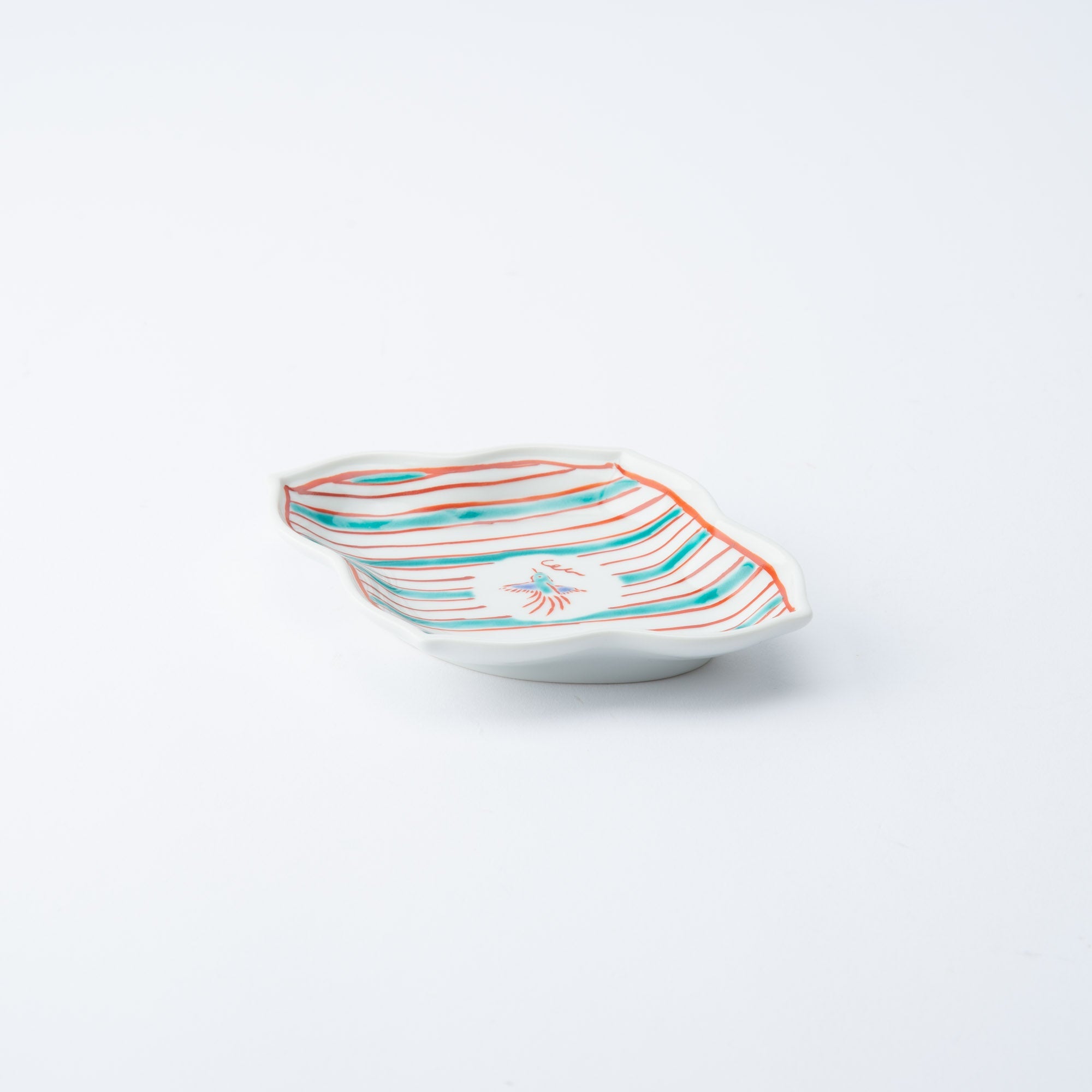
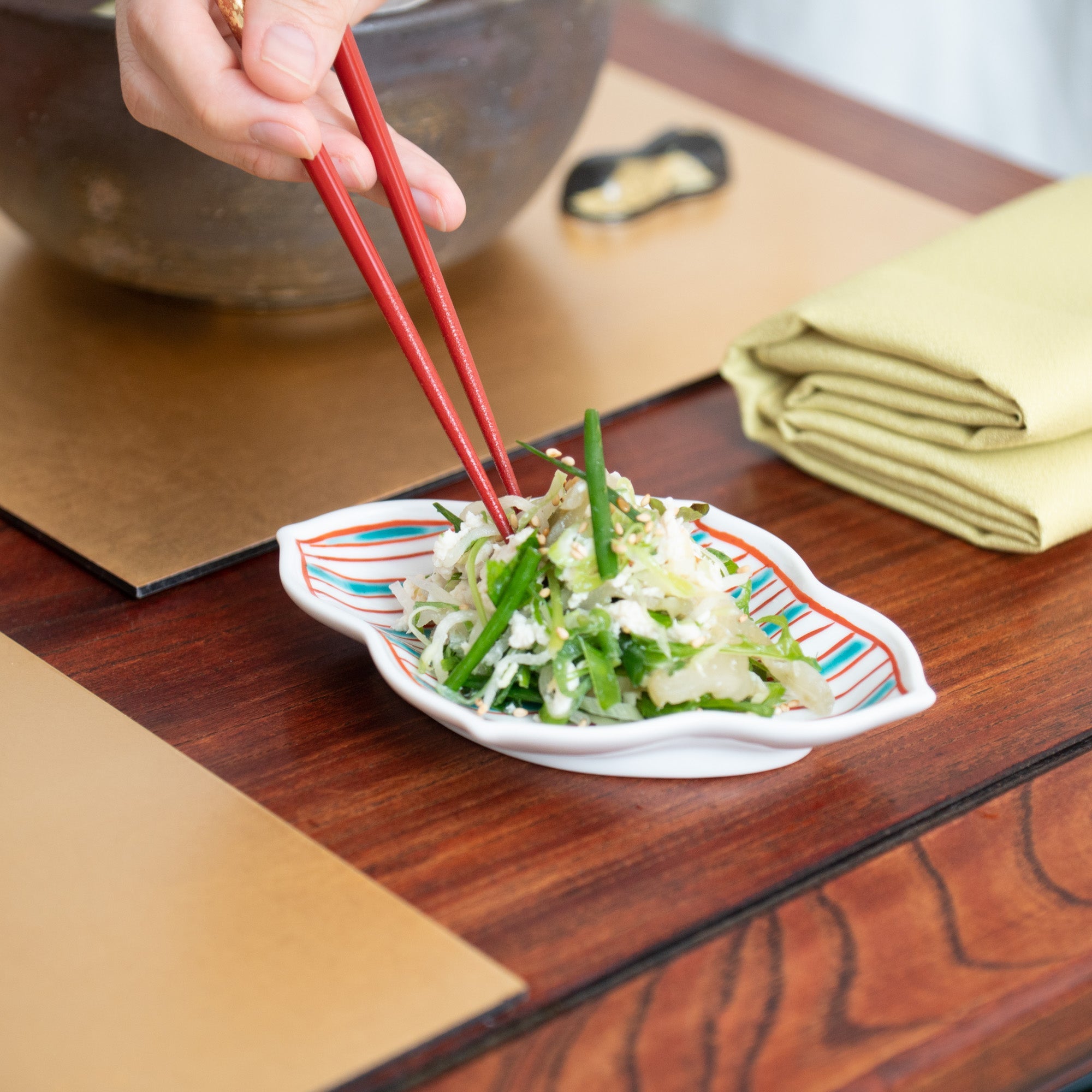
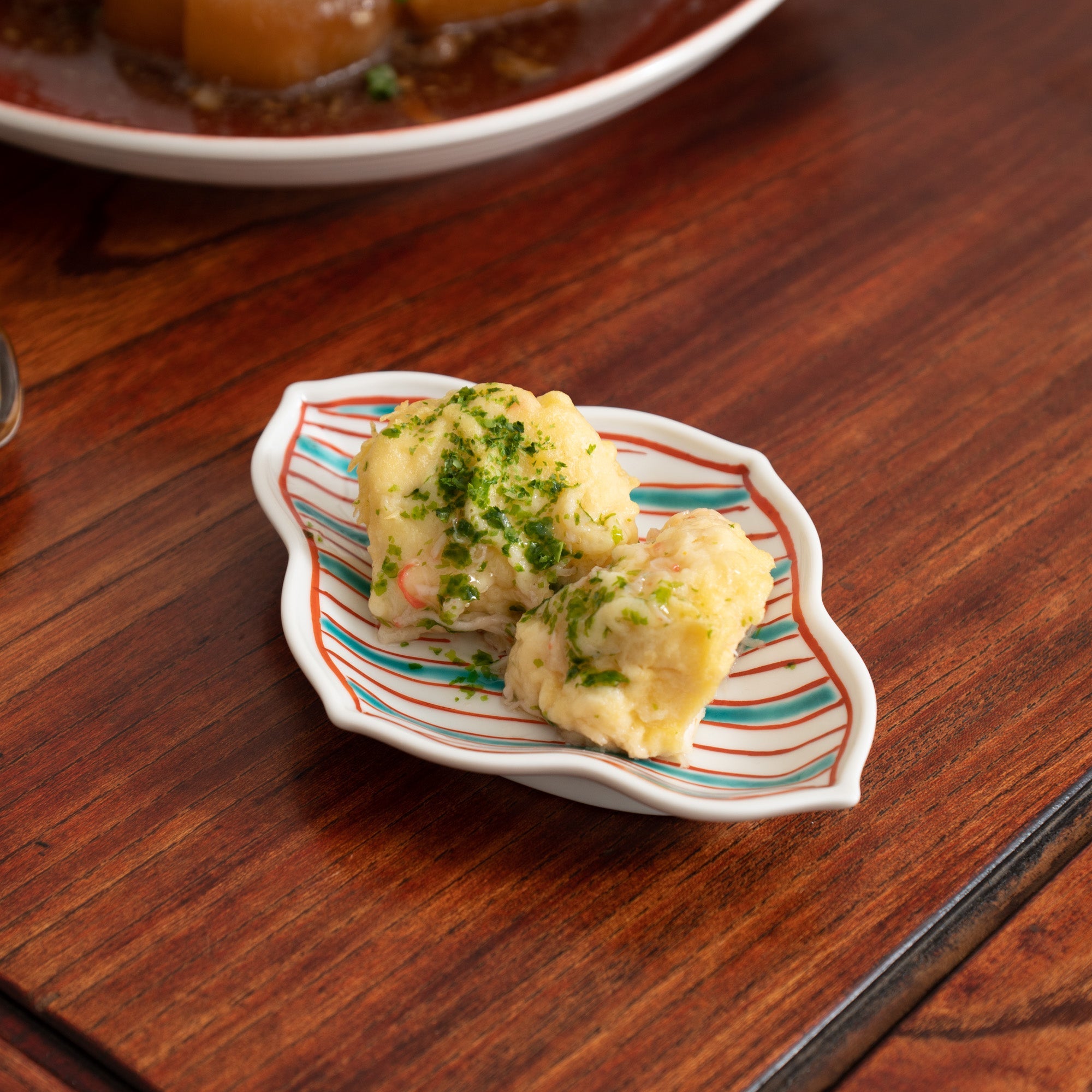
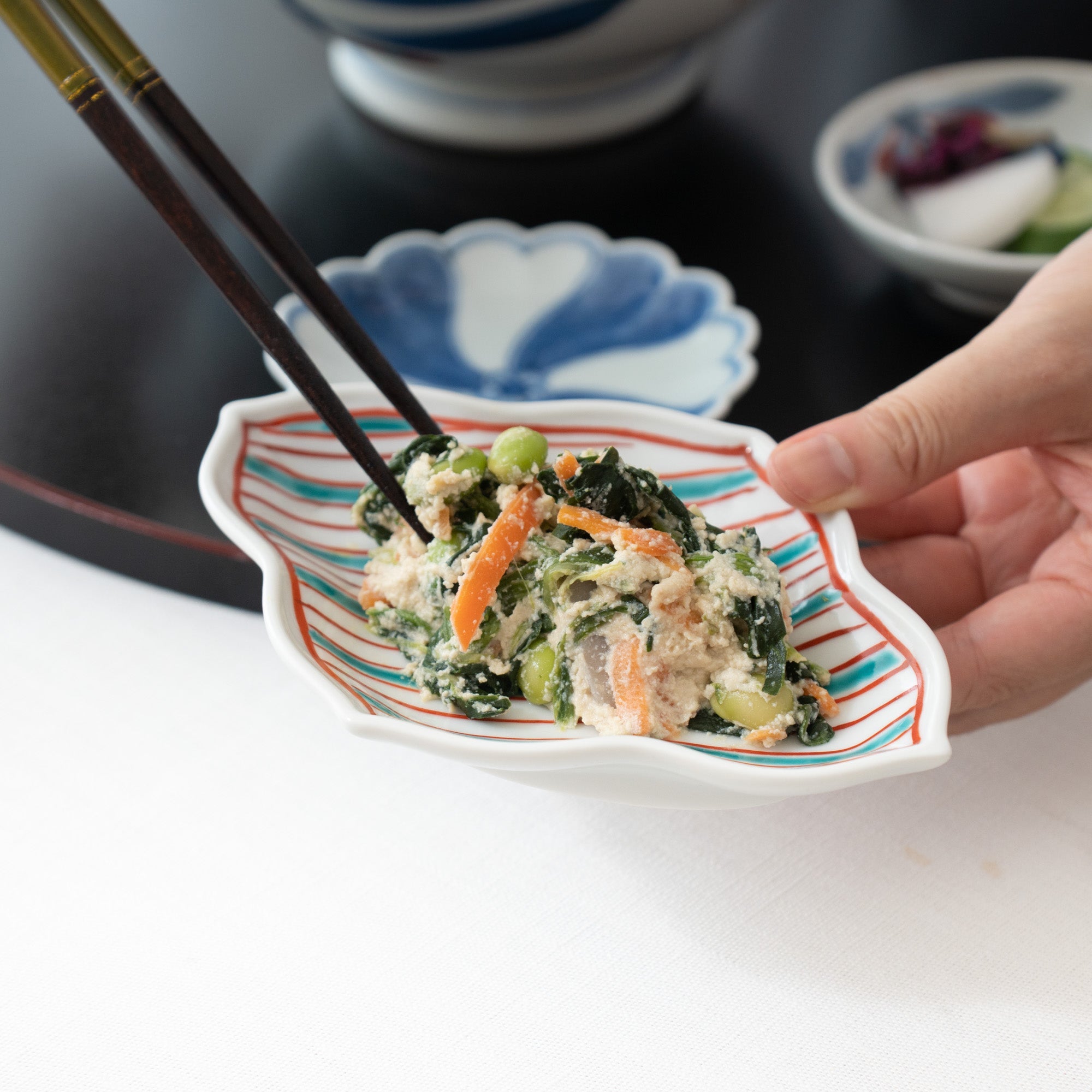
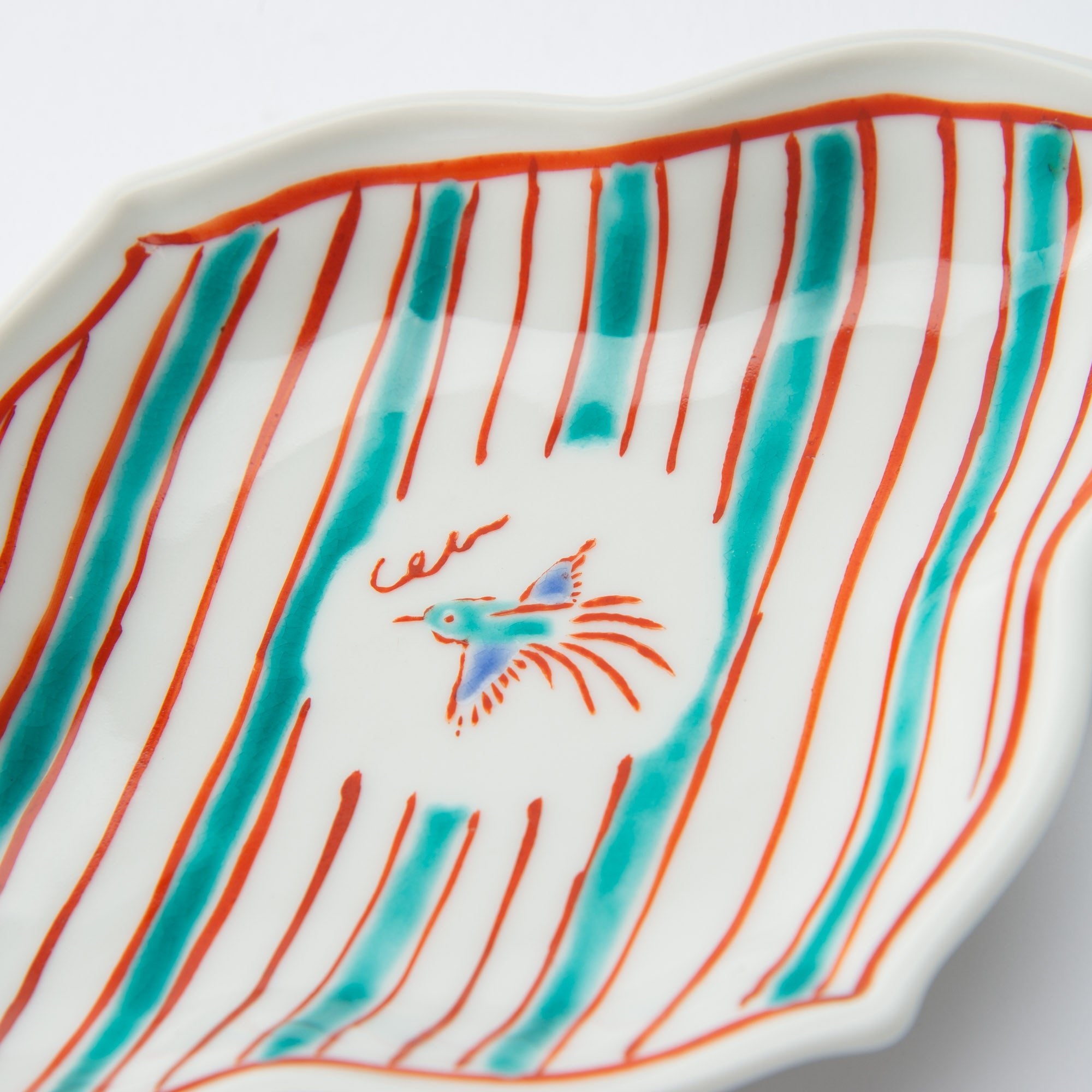
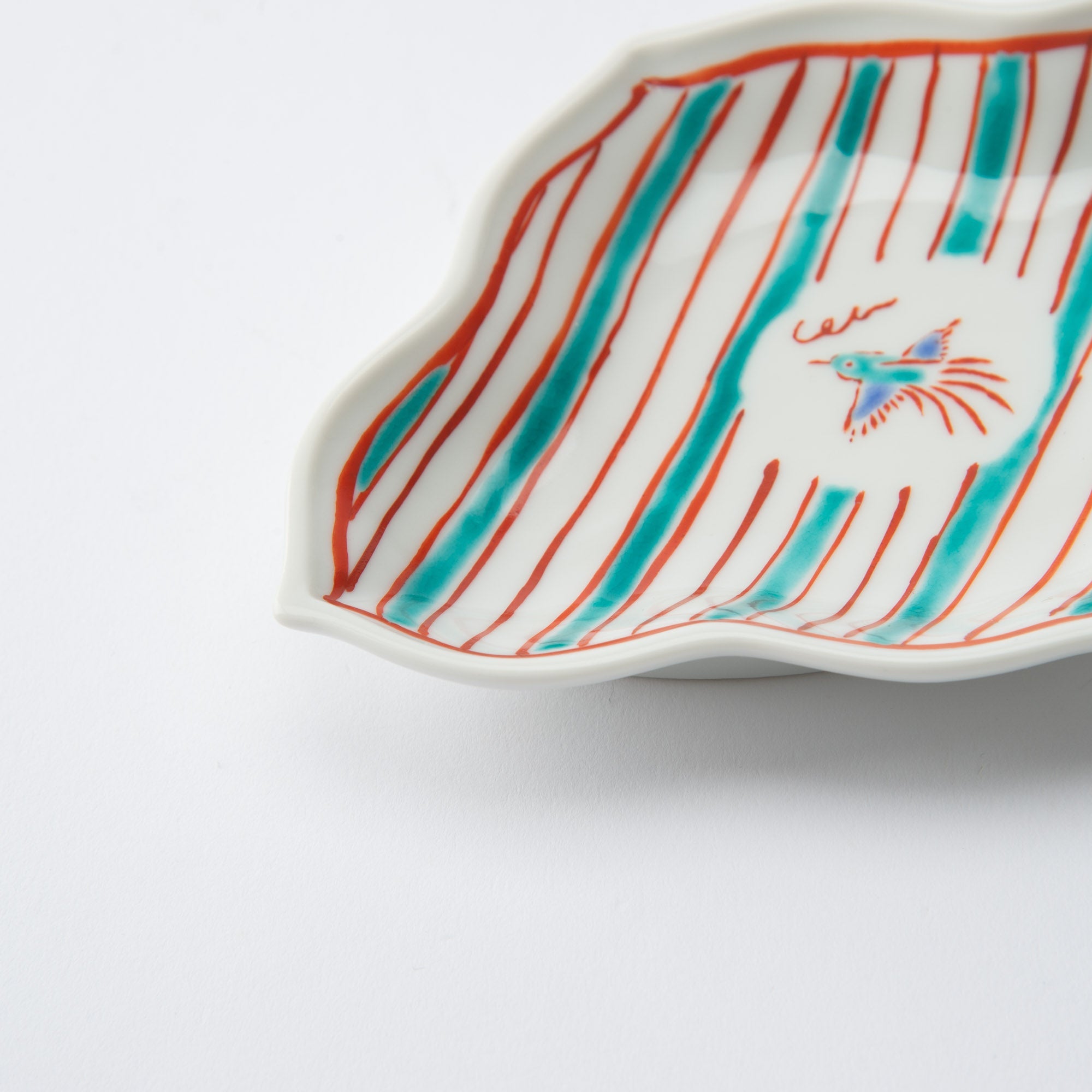
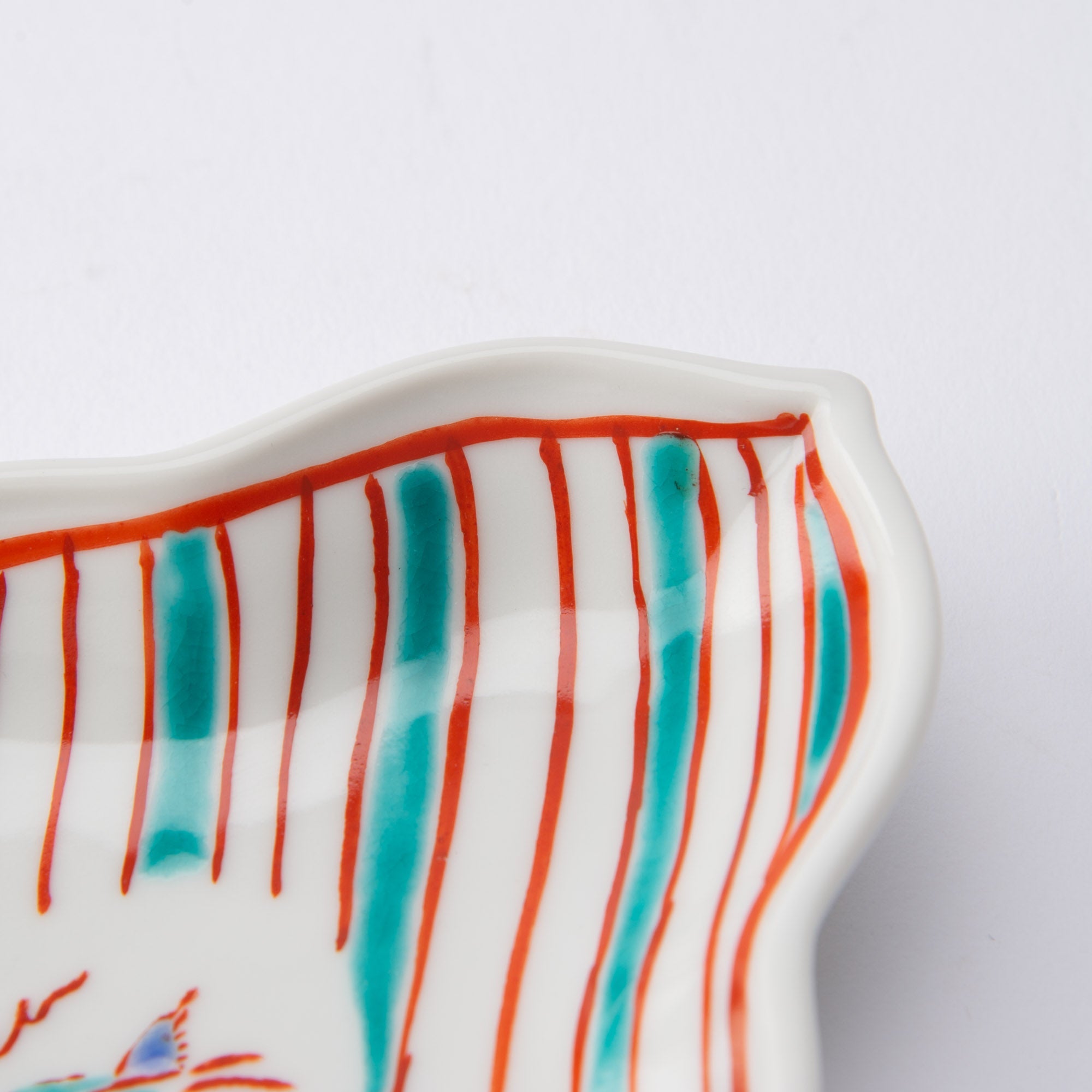
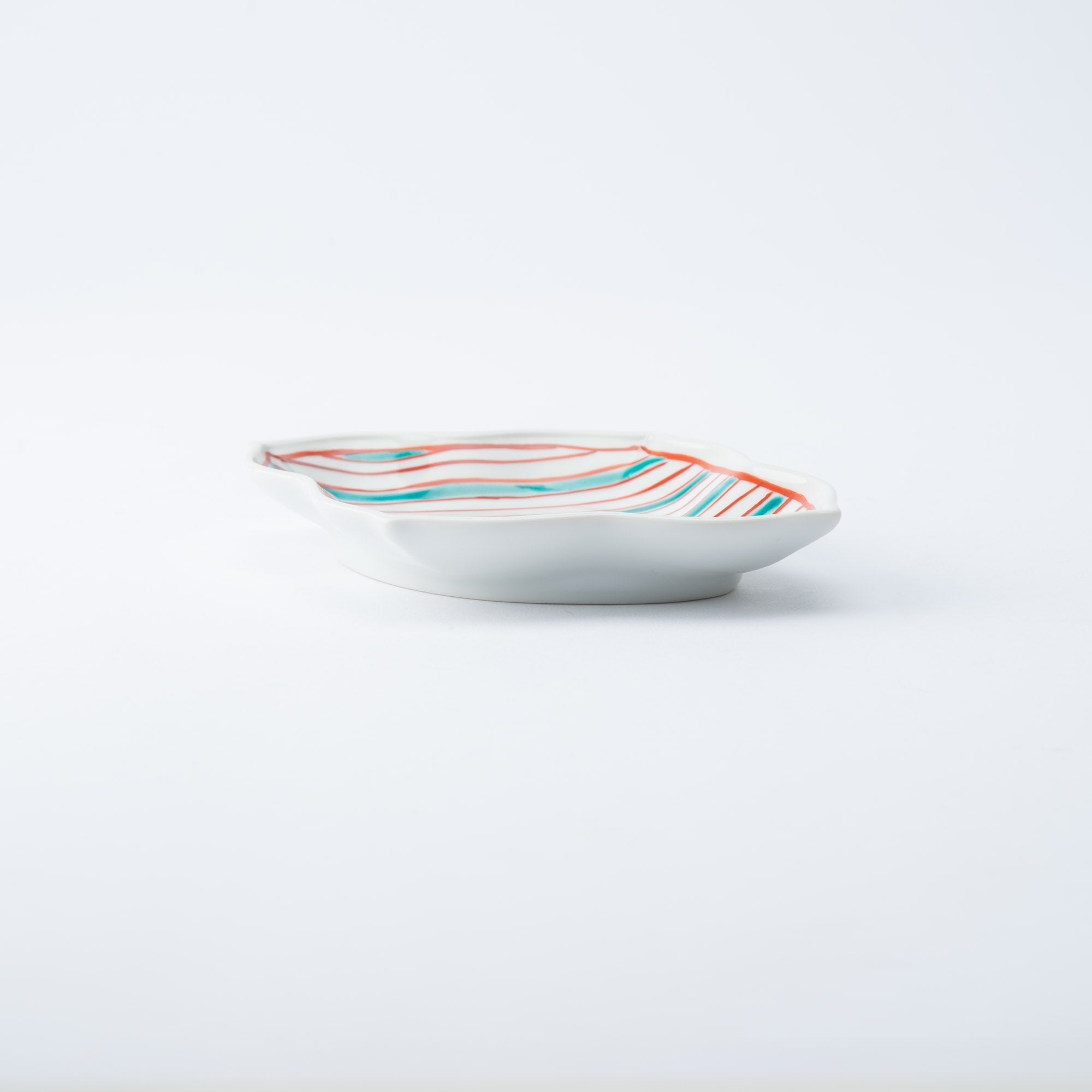
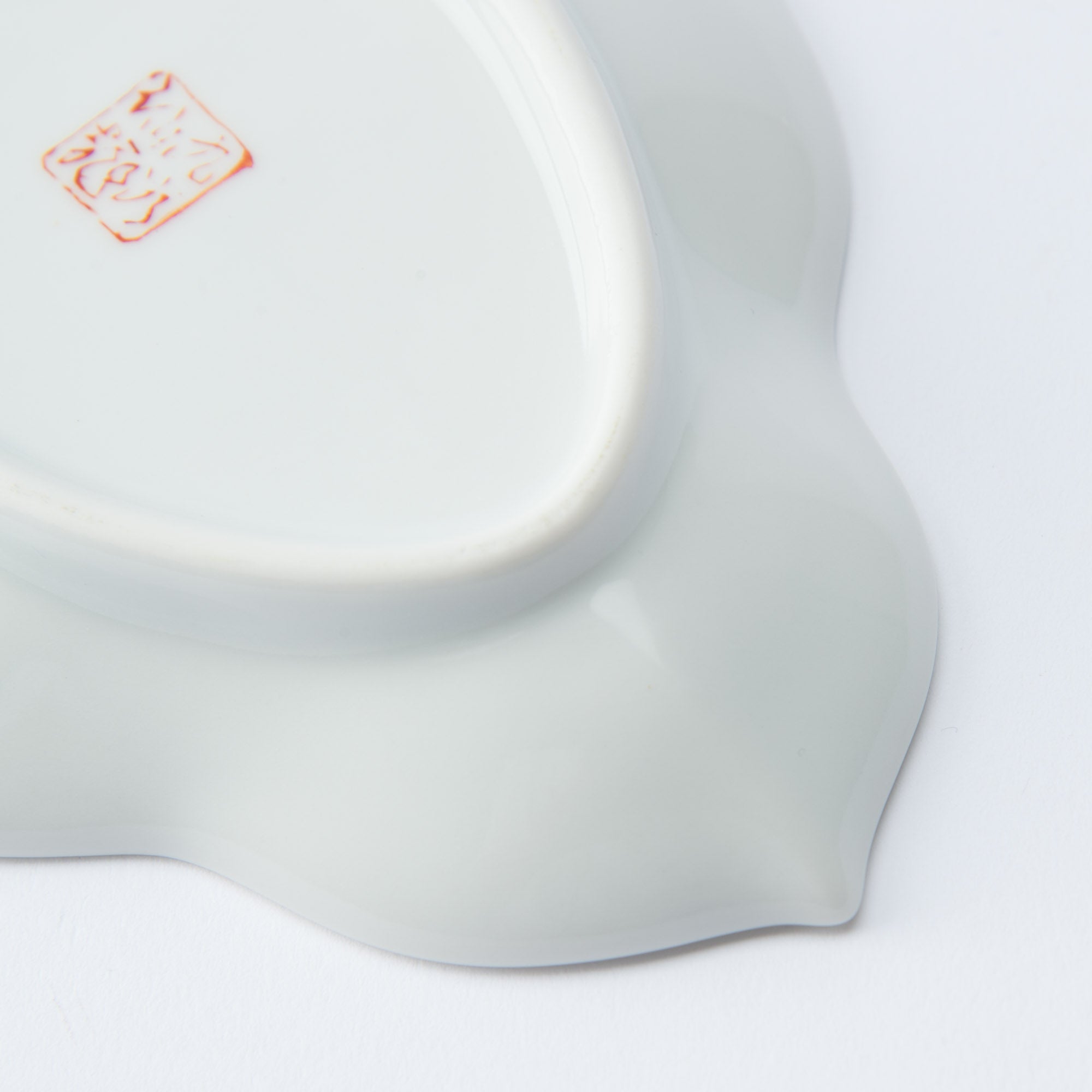
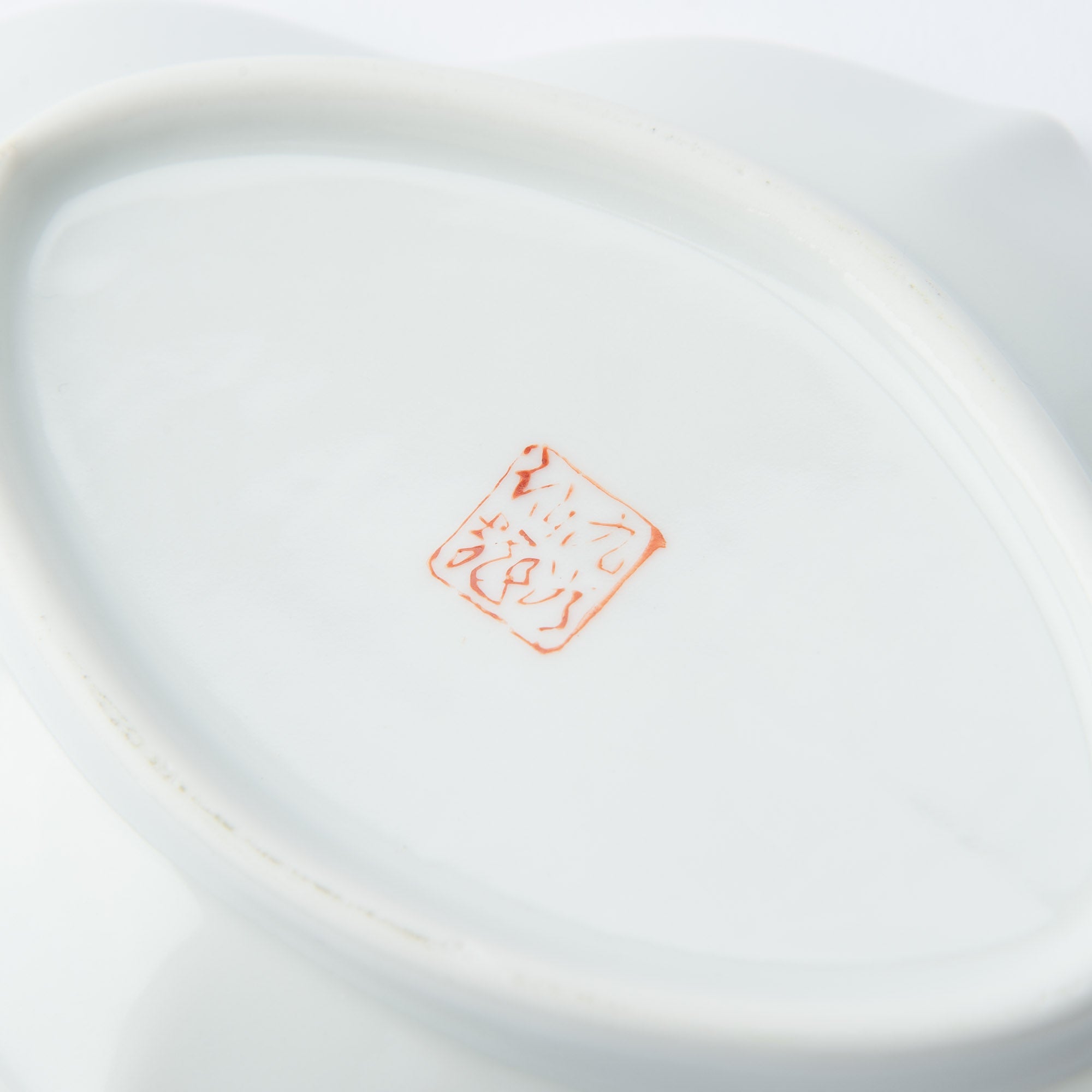
Flying Bird Kutani Diamond Shaped Side Plate
Estimated Shipping Widget will be displayed here!
This is a side plate with vibrant colors, featuring hand-painted images that leave a lasting impression and evoke a soft, comforting atmosphere.
The unique silhouette of this plate is called "Hishi-gata" in Japanese, inspired by the leaves of the diamond-shaped plant called "Hishi." It is known for its robust vitality, has been favored as a symbol of healing and a strong life force.
Hishi-gata is also associated with warding off evil, serving as a shield that repels malevolent forces and, with its pointed edges, is believed to be an even stronger protective charm.
Additionally, the central bird motif not only adds cuteness but also represents good luck. It originates from a play on words between the Japanese word for "bird" (tori) and "to take in" (torikomu), symbolizing the act of attracting good fortune and positive things.
While the concepts behind it can be powerful, the plate itself takes on a gentle form reminiscent of a plant's soft curves. Moreover, the hand-painted design adds a sense of warmth and exudes the craftsmanship and devotion inserted in each unique piece.
This plate is designed for everyday use, easy to handle, and brings a pleasant feeling as it embraces good fortune.
The plate itself features vibrant colors, so when you place something on it, such as a simple appetizer with minimal colors, it will beautifully stand out.
PRODUCT DETAIL
- Dimension: 11.3cm(4.4in) x 16cm(6.3in) x H2.4cm(0.9in)
- Material: Porcelain
- Origin: Made in Japan - Kutani Ware
![]()
Choose options










Estimated Shipping Widget will be displayed here!
International Shipping
Multiple International Shipping Options
Discounted shipping for over 500000!
Free shipping for over 5000000!
Insured shipping service
Full compensation for any damage during transit.
Made by Japanese craftsmen
Fair Pricing, free Furoshiki wrapping!

